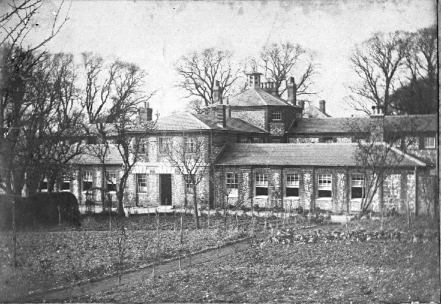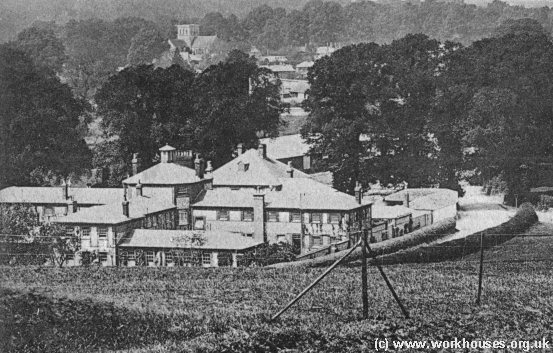Amesbury, Wiltshire
Up to 1834
No information.
After 1834
Amesbury Poor Law Union officially came into existence on 9th October 1835. Its operation was overseen by an elected Board of Guardians, 24 in number, representing its 23 constituent parishes as listed below (figures in brackets indicate numbers of Guardians if more than one):
County of Wiltshire: Allington, Amesbury (2), Boscombe, Bulford, Cholderton, Durnford, Durrington, Figheldean, Idmiston, Maddington, Milston, Newton Toney [Tony], Orcheston St George, Orcheston St Mary, Rolleston [Rollestone], Shrewton, Tilshead, Wilsford-cum-Lake, Winterborne Dantsey [Winterbourne Dauntsey], Winterbo[u]rne Earls, Winterbo[u]rne Gunner, Winterbo[u]rne Stoke, Woodford.
The population falling within the Union at the 1831 census had been 7,084 with parishes ranging in size from Rolleston (population 39) to Amesbury (944). The average annual poor-rate expenditure for the period 1833-5 had been £4,445 or 12s.7d. per head of the population.
Amesbury Poor Law Union erected at a site to the south-east of Amesbury in 1836-7. It was designed by William Bonython Moffatt who, mostly in partnership with George Gilbert Scott, designed a large number of workhouses including the one at Mere. Amesbury is a rare example of his solo work. In 1836, the Poor Law Commissioners authorised an expenditure of £3,508 on the construction of the building which was to accommodate 150 inmates; a further £1,350 was authorised in 1838. Constructed in brick and flint, the building was a variation of the Commissioners' model "square" design published by in 1835. The site layout and location are shown on the 1925 map below, by which time the workhouse was officially known as Amesbury Poor Law Institution.

Amesbury workhouse site, 1925.
The entrance block at the south had a two-storey central section with single storey wings at each side. To the rear, four accommodation wings for different classes of inmates radiated from an octagonal supervisory hub. A further transverse block which may have included an infirmary lay at the north.

Amesbury from the south-east, 1903.
courtesy of John Redpath
In 1866, the workhouse was visited by Poor Law Inspector Mr. W.H.T. Hawley. His report noted that:
Furniture.— Bed ticks, made of striped linen, are filled with cut straw or chaff, and they are placed on mattrasses filled with long straw. The conveniences for washing are, a bath in a private room for males and another for females. Troughs, with water laid on, are also provided on the landing; near the dormitories of each class of inmates, and enamelled wash-bowls are supplied in addition.
Inmates.— The classification is in accordance with the order. The men and boys wear fustian suits, winter coats of army cloth, and strong high boots; the women and girls wear blue print gowns and strong high boots, and the latter have muslin capes for summer and cloth jackets for winter. The able-bodied men pound flints; the old men and boys work in the garden (two acres). The able women are employed in general household work, washing, making and mending clothing. The old women are employed in needlework, and the school girls in sewing, washing, and laundry work. The children go out for a walk every afternoon when fine. The aged men and women take occasional exercise in the garden when recommended by the medical officer.
Medical Attendance.— The drugs for the use of the inmates of the workhouse are supplied by and at the expense of the medical officer.
Nursing.— There is no paid nurse; the nursing is done by the inmates, and has generally been satisfactory.
Chaplain.— There is a chaplain, and Divine service is regularly performed. There are only three Dissenters in the house, who attend the workhouse chapel by their own wish.
School.— The two schools are under the charge of the master of the workhouse as teacher, assisted by an industrial trainer for the girls. The children are entirely separated from the adult inmates.
Generally.— Separate infectious wards are urgently required in this union. The only room for infectious cnses amongst the males is a low room on the ground floor in the men's yard, and there are two rooms at the top of the main building close to the lying-in ward, which would be used for females if required. A paid nurse ought also to be appointed.

Amesbury from the south-east, c.1905.
© Peter Higginbotham.
After 1930, the workhouse was redsignated as a Public Assistance Institution under the control of Amesbury Rural District Council.
The former workhouse buildings were demolished in 1967.
Staff
- November 1901 - September 1904 — Master: Mr C H Bessant; Matron: Mrs Bessant.
- 1881 Census
Inmates
Records
Note: many repositories impose a closure period of up to 100 years for records identifying individuals. Before travelling a long distance, always check that the records you want to consult will be available.
- Wiltshire and Swindon Archives, Wiltshire and Swindon History Centre, Cocklebury Road, Chippenham SN15 3QN. Few records survive — holdings include: Guardians' minutes (1835-39, 1845-1930); Correspondence (1877-1912); etc.
Bibliography
- Amesbury, History and Description of a South Wiltshire Town by John Chandler and Peter Goodhugh (The Amesbury Society, 1979)
Links
- None.
Unless otherwise indicated, this page () is copyright Peter Higginbotham. Contents may not be reproduced without permission.


